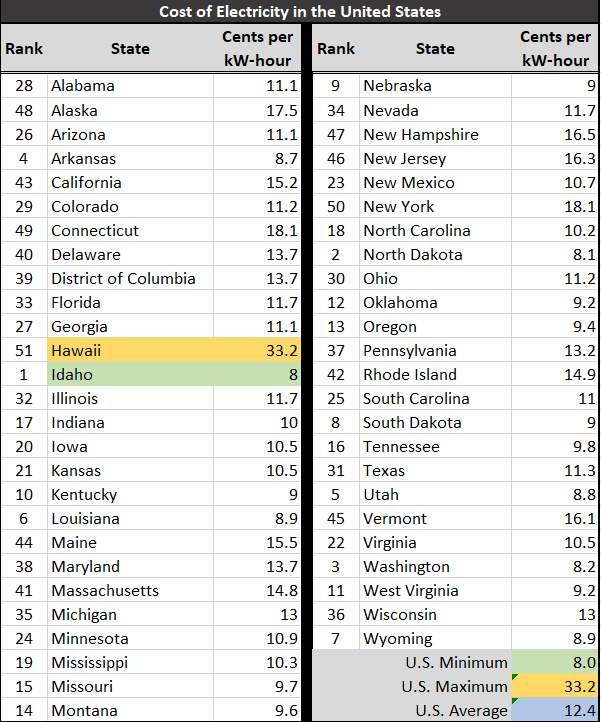Processing...
Electrician Estimation Calculators
Wiring and Box Estimates
- Outlets and Wiring for a Room: Computes the number of outlets (boxes) and length of wire to connect them in a room based on the room dimensions and the outlet spacing.
Installation Time Estimates
- EMT Conduit Installation Time: Estimate installation time of Electrical Metallic Tubing conduit based on the length of conduit, size of conduit and level of difficulty.
- GRC Conduit Installation Time: Estimate installation time of Galvanized Rigid Conduit based on length of conduit, size of conduit and level of difficulty.
- PVC 40 Conduit Installation Time: Estimate installation time of PVC Schedule 40 conduit based on length of conduit. size of the conduit and level of difficulty.
- Metal Clad Cable Installation Time: Estimate installation time of Metal Clad Cable based on length of conduit. size of the conduit and level of difficulty.
- Lamp Lay-in Fixture Installation Time: Estimate the installation time for lamp lay-in fixtures based on size of the fixtures, level of difficulty and number of fixtures.

 20A Duplex Outlet Installation Time: Estimate the installation time for 20 Amp Duplex Outlets based on the level of difficulty and number of outlets.
20A Duplex Outlet Installation Time: Estimate the installation time for 20 Amp Duplex Outlets based on the level of difficulty and number of outlets.- 20A SP Switch Installation Time: Estimate the installation time for 20 Amp Switches based on the level of difficulty and number of switches.
Conduit Weight Estimates
- EMT Conduit Weight: Estimate the weight of Electrical Metallic Tubing based on the size of the tubing and the length.
- GRC Conduit Weight: Estimate the weight of Galvanized Rigid Conduit based on the size and length of the conduit.
- PVC Schedule 40 Weight: Estimate the weight of Schedule 40 PVC based on the size, length and whether it is PVC or CPVC.
- Metal Clad Cable Weight: Estimate the weight of metal clad cable based on the size and the length.
Electrician Calculators
- Voltage Drop: This computes the voltage drop in volts and as a percentage over a length of cable (wire) based on length of wire, gauge, wire material, temperature range and phase.
- Wire Gauge Choice for Safe Voltage Drop: This determines the lightest gauge of wire that can be used over a run (circuit) that maintains adequate voltage.
- Circular Mils and Voltage Drop: This computes voltage drop based on wire diameter in circular mils instead of wire gauge.
- Electricity Usage Cost: This computes the cost of electricity for the use of a piece of equipment based on the power consumption rate, duration and cost of electricity.
- Electricity Consumption: This computes the amount of electricity consumed by an electrical appliance or motor over time.
- Rolling Offset: This computes the travel (T) and run (R) of a rolling offset used in conduit piping based on the offsets and angles.
- Diameter of AWG Wire: This provides the diameter of wire based on the American Wire Guide (AWG) gauge in mils and millimeters, and it also provide the cross-section area in square millimeters.
- P = V2 / R: This computes power (Watts) based on the voltage (V) and resistance (R).
- DC to AC Converter: Computes the approximate voltage of Alternating Current (AC) from the voltage of Direct Current (DC).
- Diameter to Circular Mils: Computed the circular mils of a wire and the cross-section area based on the wire's diameter.
The Cost of Electricity
The cost of electricity in different states is influenced by a combination of factors, including:
- Fuel Costs
- Type of Fuel: States that rely heavily on natural gas, coal, or renewable sources like wind, solar, or hydroelectric power may experience different costs depending on the availability and price of these fuels.
- Fuel Availability: Regions closer to fuel sources generally have lower transportation costs, which can lead to lower electricity prices.

- Energy Mix
- Renewable Energy: States with significant investments in renewable energy sources may have lower or higher costs depending on the subsidies, infrastructure costs, and efficiency of these sources.
- Nuclear Energy: States with nuclear power plants might have stable but relatively high upfront costs, leading to long-term stable pricing.
- Infrastructure
- Transmission and Distribution Costs: The cost to build, maintain, and upgrade the grid infrastructure varies. States with extensive or outdated grids may have higher costs.
- Geography: Remote or mountainous regions may face higher costs to build and maintain infrastructure.
- Regulatory Environment
- State Regulations: Some states have deregulated electricity markets where competition can drive prices down, while others have regulated markets where prices are set by utility commissions.
- Environmental Regulations: States with strict environmental regulations may have higher costs due to the need to comply with emissions standards or invest in cleaner technologies.
- Demand
- Population and Industrial Demand: States with higher demand due to population density, industrial activity, or extreme weather conditions (requiring heating or cooling) may have higher electricity costs.
- Peak Demand: States that experience high peak demand may face higher costs if additional, often more expensive, generation capacity is required to meet those peaks.
- Market Conditions
- Wholesale Electricity Prices: These are influenced by supply and demand dynamics, fuel costs, and market regulations. States participating in regional electricity markets might experience different prices based on market trends.
- Competition: In deregulated states, competition among electricity providers can influence prices.
- Taxes and Fees
- State Taxes: Some states impose additional taxes on electricity, which can increase the overall cost to consumers.
- Utility Fees: Utility companies may charge additional fees for grid maintenance, renewable energy programs, or other services.
- Weather and Climate
- Climate: States with extreme climates may have higher costs due to increased demand for heating or cooling.
- Natural Disasters: Regions prone to hurricanes, wildfires, or other natural disasters might face higher costs due to the need for more resilient infrastructure.
- Economic Conditions
- Economic Growth: High economic activity can drive up demand, affecting prices.
- Subsidies and Incentives: Government subsidies for certain types of energy production can lower costs, while the lack of incentives can result in higher costs.
Each of these factors can interact in complex ways, leading to significant variations in electricity prices across different states.
